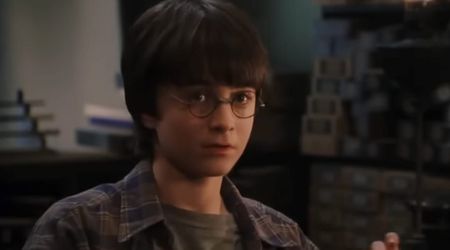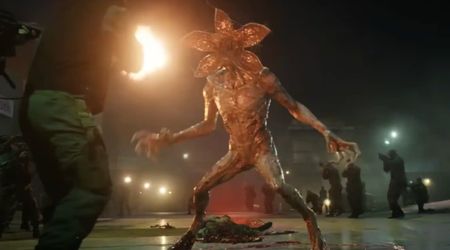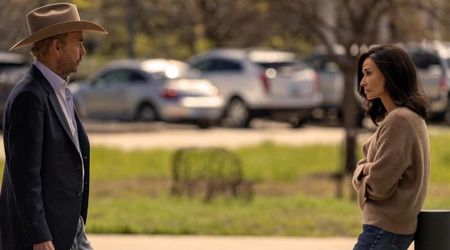'Lord of the Rings' Explained: Find out about every type of troll seen in the movies & TV shows

LOS ANGELES, CALIFORNIA: 'The Lord of the Rings' franchise has captivated audiences with its rich world-building, spanning films, games, and now television with 'The Rings of Power'. As the second season approaches, fans eagerly anticipate more of J.R.R. Tolkien's fantastical creatures brought to life through impressive casting and cutting-edge special effects.
However, not all trolls are alike. Over the years, the franchise has introduced six distinct types of trolls, each showcasing Tolkien's boundless creativity and the depth of his legendary world. From the menacing cave trolls to the towering mountain trolls, these creatures have become iconic, adding a new layer of horror and wonder to Middle-earth's expansive lore.
6. Hill Trolls

Hill Trolls, also known as Coldfells Trolls, reside north of Rivendell. Though absent in Peter Jackson's 'The Lord of the Rings' films, they appear in J.R.R. Tolkien’s 'The Return of the King' during the Battle of the Black Gate.
These formidable creatures have scaly, tough skin resembling tightly woven mesh. Their preferred method of killing is to pick up their enemies and bite their throats. Hill Trolls are depicted as towering and broad, although their exact size is not specified.
In 'The Battle for Middle-Earth II: The Rise of the Witch King' video game, they are shown with heavy armor, wielding large mauls, and bear a resemblance to Olog-Hai. Historically, Hill Trolls played a significant role in Middle-earth, including killing Arador, Aragorn's grandfather.
Their fearsome reputation makes them a notable enemy within Middle-earth's history, adding to the diverse and dangerous inhabitants of Tolkien’s world.
5. Mountain Trolls

Mountain Trolls are among the largest and strongest troll species in Middle-earth. These towering creatures are predominantly found in the mountainous regions of Middle-earth and serve Sauron in various heavy-labor tasks.
In 'The Two Towers' movie, Mountain Trolls are seen chained to a track, opening Mordor's Black Gate, and later, in 'The Return of the King', they are depicted operating the massive battering ram, Grond.
Their sheer strength and size make them invaluable in battle and labor, showcasing their importance within Sauron's forces. Although Mountain Trolls are known for their brute force, their role in the visual media of 'The Lord of the Rings' highlights their integral part in Sauron's war machine.
Their menacing presence in the films and their role in crucial battles make them an iconic part of Middle-earth's menagerie of monsters.
4. Snow Trolls

Snow Trolls are creatures that exist more in the realm of creative license than in Tolkien’s original works. Mentioned briefly in allusions to Helm Hammerhand during the Long Winter, these trolls are described but never fully explored in Tolkien's texts.
This has allowed adaptations like 'The Rings of Power' and various video games to take creative liberties with their appearance and behavior. Typically depicted with patches of fur, pale hide, and sometimes tusks or horns, Snow Trolls differ slightly in their portrayal across media.
In 'The Battle for Middle-Earth II: The Rise of the Witch King' expansion, they are shown with green skin and smaller stature compared to other trolls. These variations underscore the adaptability of Tolkien's world to different interpretations, with Snow Trolls serving as a prime example of how new media can expand upon and reimagine Middle-earth's creatures.
3. Stone Trolls

Stone Trolls, closely related to Hill Trolls, feature prominently in 'The Hobbit'. The most famous Stone Trolls are Tom, Bert, and William, who encounter Bilbo and the dwarves. Unlike many other troll species, Stone Trolls are capable of speech and social interaction, making them among the most intelligent of their kind.
However, they have a significant weakness—exposure to direct sunlight turns them into stone, which ultimately leads to their downfall when they are outwitted by Bilbo. Their ability to communicate and think independently sets them apart from other trolls, yet it also contributes to their memorable defeat.
The transformation of Stone Trolls into lifeless statues in the sunlight adds an element of myth and cautionary tale to their existence, highlighting their unique place in Tolkien's world.
2. Cave Trolls

Cave Trolls are among the most terrifying creatures in Middle-earth, making their memorable debut in the 'The Fellowship of the Ring' film adaptation. These massive, hulking beasts with thick, impenetrable hides pose a significant threat to the Fellowship during their journey through the Mines of Moria.
Despite their formidable size and strength, they are not invincible; in the books, Frodo manages to wound one by stabbing its foot with his sword, Sting. Cave Trolls are also known to inhabit the Ettenmoors, further solidifying their fearsome reputation in the northern reaches of Middle-earth.
Their imposing presence and near-invulnerability make them a formidable adversary, embodying the raw, brutal power that Sauron’s forces can wield. Cave Trolls stand as a stark reminder of the dark, dangerous world that Tolkien created, where even the bravest heroes can find themselves overmatched by the forces of evil.
1. Olog-Hai

The Olog-Hai are a breed of trolls mentioned in Tolkien’s appendices, known for their exceptional combat abilities and resistance to sunlight. Unlike other trolls, who are vulnerable to sunlight, the Olog-Hai were bred by Sauron to fight in daylight without any ill effects.
These massive, scaley creatures are armed to the teeth and play a significant role in Sauron’s army during the Third Age. They are most notably featured in 'The Return of the King', where Aragorn battles one at the Black Gate in place of a planned confrontation with Sauron himself.
The Olog-Hai's presence in Mordor and Mirkwood, along with their fearsome reputation, makes them one of the most dangerous enemies in Middle-earth. Their demise after the War of the Ring marks the end of one of Sauron's most potent weapons, symbolizing the fall of darkness and the return of peace to Middle-earth.
'The Lord of the Rings: The Rings of Power' Season 2 trailer










